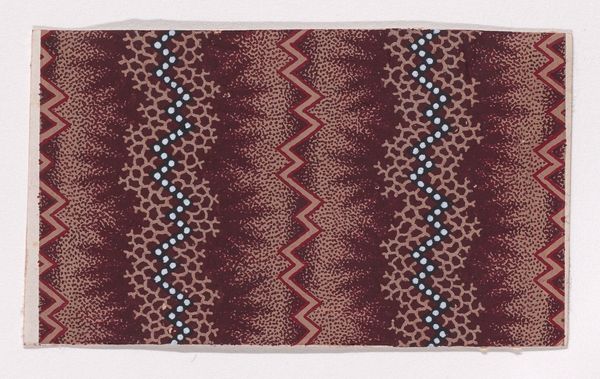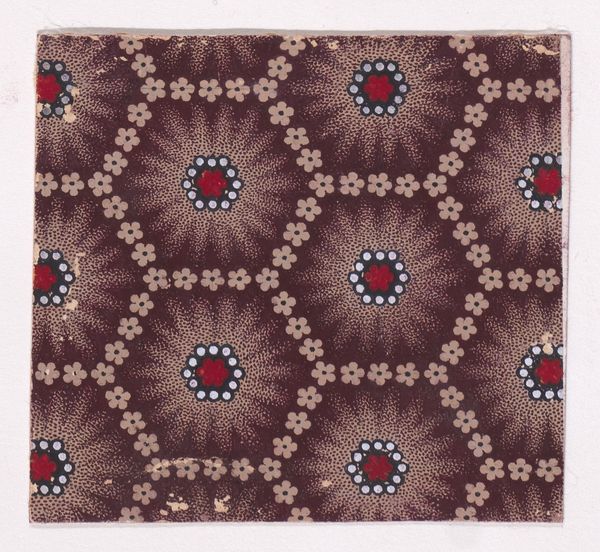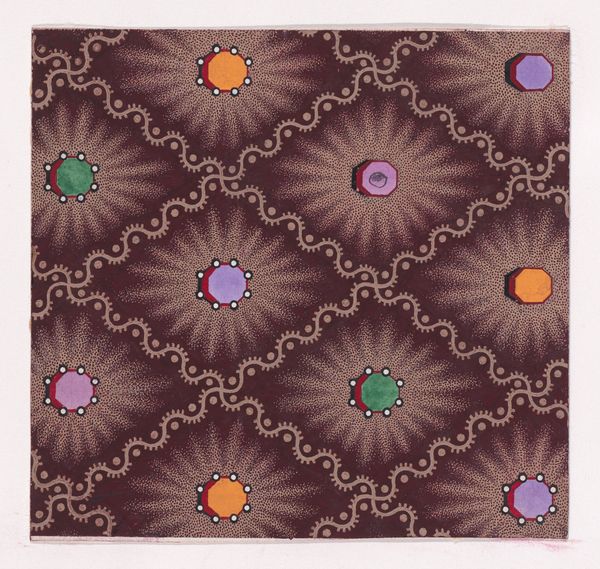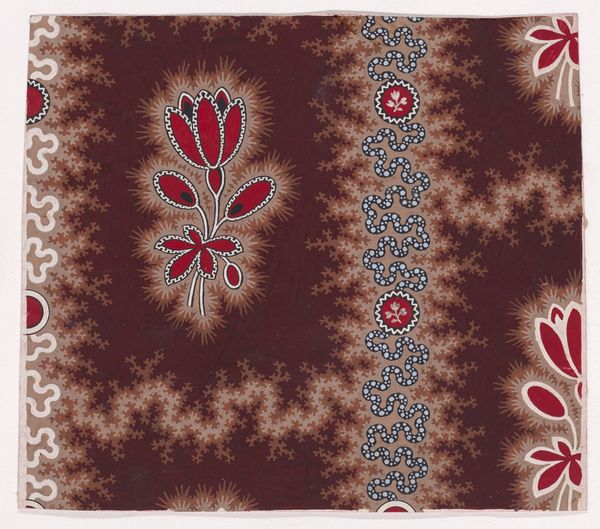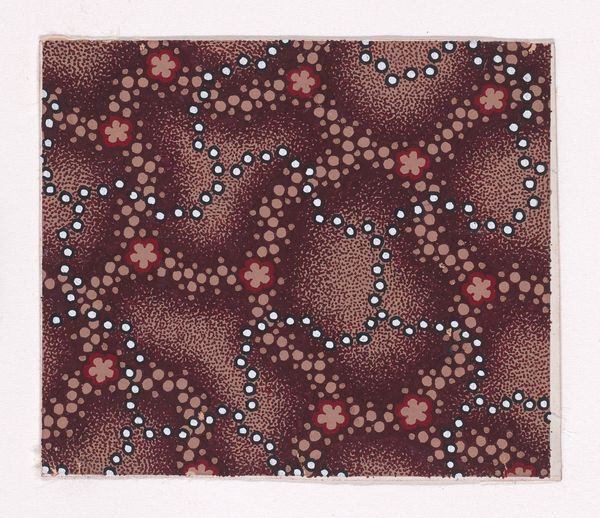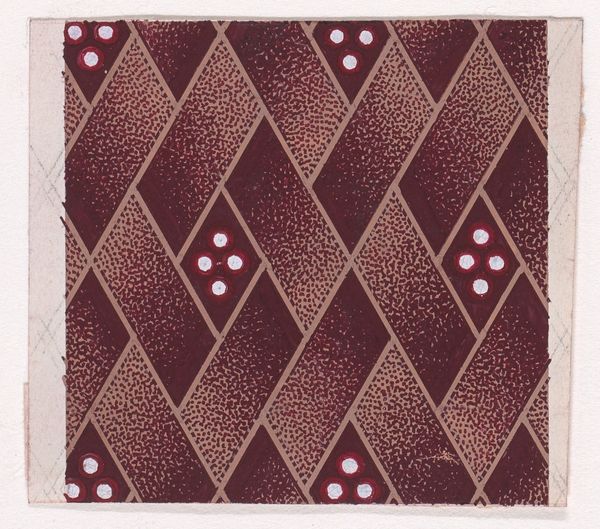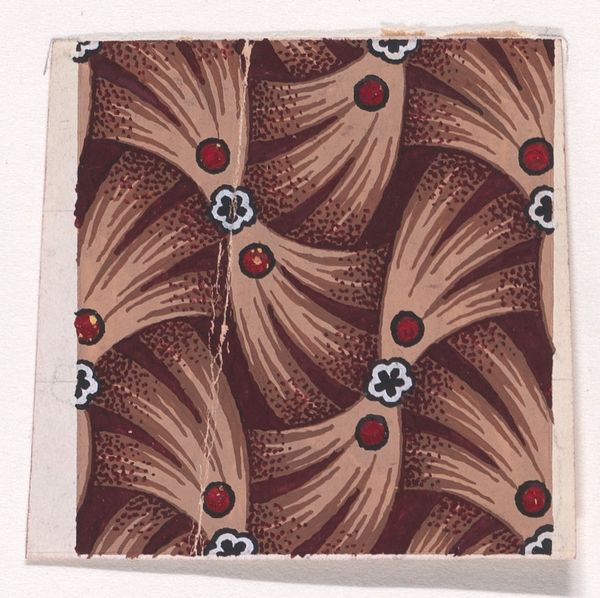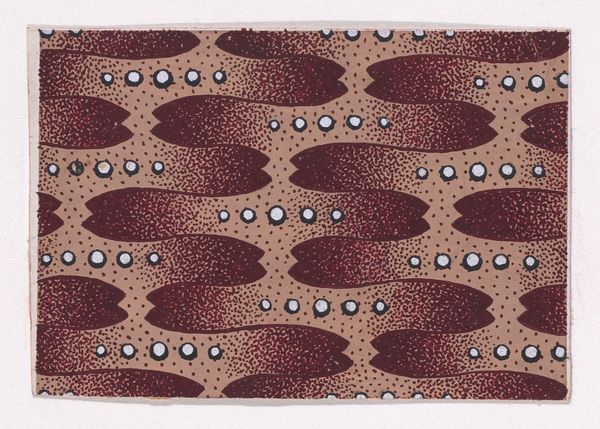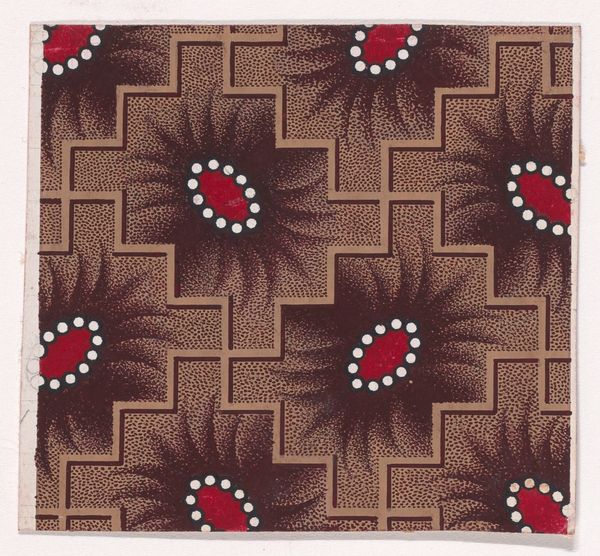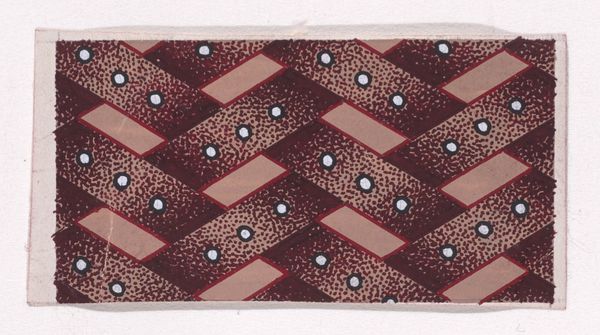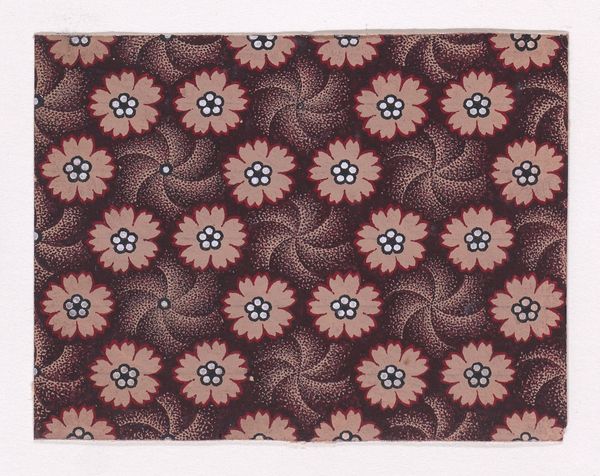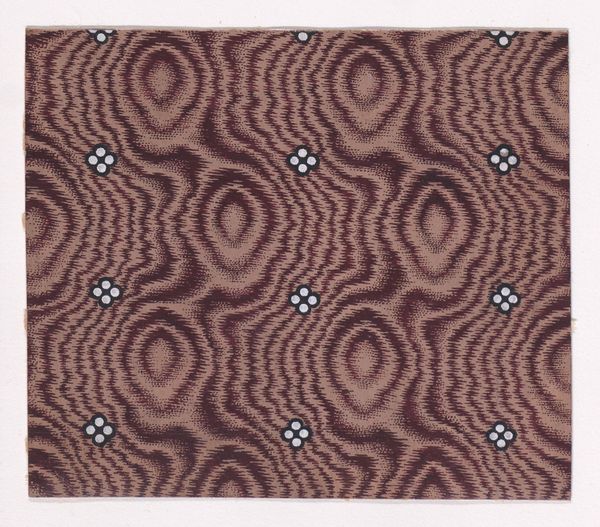
Textile Design with Vertical Vermicular Strips of Pearls Separated by Chevron Stripes 1840
0:00
0:00
drawing, print, textile
#
drawing
# print
#
pattern
#
textile
#
geometric pattern
#
pattern design
#
geometric
#
textile design
#
decorative-art
Dimensions: Sheet: 2 1/4 × 3 7/16 in. (5.7 × 8.8 cm)
Copyright: Public Domain
Editor: Here we have a textile design from 1840, called "Textile Design with Vertical Vermicular Strips of Pearls Separated by Chevron Stripes", and its creator is unknown. It’s a drawing, maybe for a print? I am fascinated by the density of detail, and the brown, red and white palette create a surprising warmth. What strikes you about it? Curator: The title itself is fascinating, isn't it? Sounds like someone having a bit of a lark. Vermicular strips of pearls... chevron stripes! Delicious. Beyond the whimsy, though, I see a tension between order and chaos. The repeating pattern speaks to the human desire for structure and predictability, which I sometimes crave with my scattered brain, whilst the slightly irregular execution, especially within those pearl-like forms, hints at a more organic, free-flowing energy. Makes you wonder, doesn't it, if this was meant for clothing, wallpaper, or some other decorative purpose? Where might we see this pattern repeated? Editor: It’s funny you mention that chaos, because despite being very decorative, I find its muted color a bit serious, in contrast to a cheerful design. It is as if the author was uncertain. Also, about its usage, how do you imagine people perceived patterns like this back in 1840? Curator: That’s a spot-on observation! The somber color might point toward specific aesthetic trends of that time. It's important to think about the intended audience – imagine it in a dimly lit Victorian parlor, contrasting with the dark wood furniture. Colors held so much power then. Today, maybe we're all used to anything and everything, or we can create images quickly, so we might not grasp how meaningful design motifs can be, or how expensive fabrics were. Perhaps even a status symbol, a quiet proclamation of taste and refinement! And who gets to produce it! The economic ramifications might be more important to study now that making something look worn out became fashion too. Editor: I never thought about how radical it could be to reproduce such detailed images so quickly with printing techniques back then! This conversation really expanded how I think of textile and fashion. Curator: Exactly! We took the scenic route, you see, which can happen to anyone when you're thinking outside the usual picture frame. But looking closely made all the difference!
Comments
No comments
Be the first to comment and join the conversation on the ultimate creative platform.
